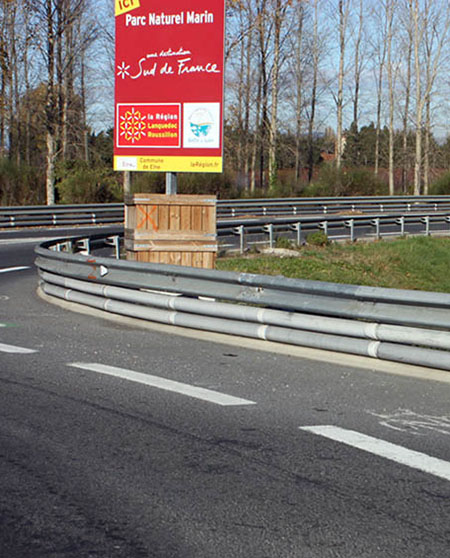 Europe – The one thing that we (Motorcycle Minds) try to ensure in the reporting of our articles is that they are factual to the point of being pedantically detailed. What we detest in articles or reports that we come across by others, is misrepresentation, misinterpretation, no references, or a just lack of professionalism.
Europe – The one thing that we (Motorcycle Minds) try to ensure in the reporting of our articles is that they are factual to the point of being pedantically detailed. What we detest in articles or reports that we come across by others, is misrepresentation, misinterpretation, no references, or a just lack of professionalism.
A general rule of thumb is that it’s not good to pass your personal opinion across as fact or truth in articles. While it might give the author a warm fuzzy feeling, it does not help the reader to understand the issues which are central to whatever debate is taking place.
Does being pedantic matter? Well yes it does if you are a pan-European motorcycle organisation representing members.
The latest blog by the General Secretary of FEMA has the title – “’Safe infrastructure is a basic right for all road users, including motorcyclists”.
The blog looks at road infrastructure and the inclusion of motorcycles in the safety of design, structure and maintenance of roads and specifically “crash barriers” or Vehicle Restraint Systems (VRS) as a pedantic definition would infer.
On motorcycle friendly barriers, the FEMA General Secretary comments, “Unfortunately there are still no standards for motorcycle protection systems, so every manufacturer can do as he likes. On the other side just this absence of test standards may have led to some promising projects, of which I hope to be able to tell you more later. Nevertheless, we do need those standards, but what we need even more are European or national (I really don’t care which) regulations about the installation of motorcycle protection systems to new and existing barriers. Some countries already made a start, but this is not enough.”
We would consider this comment to be neither fish nor fowl, because it leaves out fundamental information. Perhaps the author is just not aware of all the work that FEMA had done in the past? (Possibly not without reason, as all the historical reports on various campaigns and topics seem to have disappeared from FEMA’s public website).
Ultimately we don’t know why, but we did try to comment twice in reference to the blog on social media – in both cases the comments were deleted. In both cases, the comments had the purpose of trying to clarify what was effectively important information regarding road restraint systems for motorcyclists.
EN1317-8 or Road Restraint Systems for PTWs
In 2011 at the CEN (European Committee for Standardization) technical committee on road equipment (TC226) annual meeting in Stockholm, a draft standard for a road restraint protection system for motorcycles (EN1317-8) was on the agenda. Because of various issues which were identified within the committee, the proposal for this draft standard rather than being rejected was accepted as a Technical Specification as an interim solution – an experimental standard.
The TC 226 committee was expected to have the full standard ready and approved within two/three years, including expanding the scope of the standard from the accident configuration with the rider sliding along the road surface having fallen from a motorcycle to an upright impact with the rider on-board the bike, this period is now passed.
In the FEMA 2012 document, “New Standards For Road Restraint Systems For Motorcyclists – Designing Safer Road Sides For Motorcyclists”, it explains regarding the Motorcyclist Protection Systems (MPS) that, “The European Committee for Standardization (CEN) has developed the TS 1317-8, which contains provisions for the evaluation of the performance of safety barriers” and that, “CEN will continue to work towards the transformation of the TS into a full European standard. In the meantime, the TS is available for national authorities to use for the evaluation of MPS. Only when the protocol becomes a full European standard will member states be obliged to abandon any alternative test protocols.”
In fact prior to this vote, LIER (France) had developed a protocol in 1998: for the evaluation of motorcyclist protection systems for safety barriers; in 2008 the Spanish standards agency (AENOR) had defined a similar national testing standard based on the French procedure (Standard UNE 135900:2008 rev.01). The use of these two test procedures, and very similar testing in Italy, led to the approval and deployment of motorcyclist protection systems for barriers on Spanish, French, Italian and Portuguese roads.
As far as we are aware motorcycle friendly barriers and protection of various types and designs have been fitted in the UK , Netherlands, Sweden, Germany for a few years, all to the standard EN1317 and to motorcycle testing procedures.
What this means is that if road authorities wanted to fit a system of MPS or motorcycle friendly barriers on existing or new barriers, there is a standard of sorts which can be followed, so that these barriers are “safe” for motorcyclists and other specific vehicles. If motorcyclists are concerned that a certain section of barrier is in an unsafe position then they can engage with their authorities to fit an “approved” motorcycle friendly barriers.
At what stage the conversion from the experimental standard to a full standard is at, we are not aware, but then again our purpose is to comment and report, not to lobby.
Effectively this is the job for FEMA, that’s what members pay their fees for. In conclusion, rather than read the thoughts of the General Secretary, it would be really great to know where CEN is with regards the standard or Technical Specification of EN1317-8.
That may be pedantic – but at least it would be informative and factual – and frankly, far more useful.
FEMA – Motorcyclist Protection Systems – www.mc-roadsidebarriers.eu


Leave a Reply